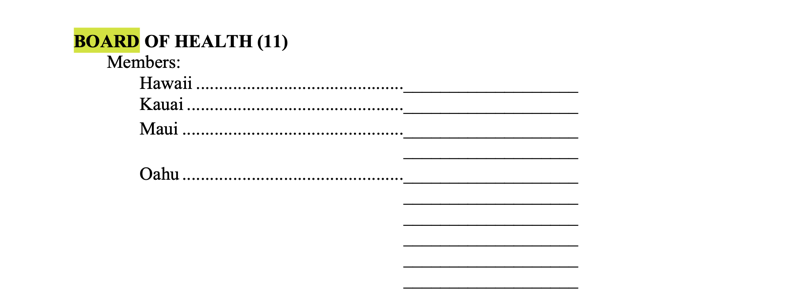The auditor just dropped their report on the contract tracing efforts of the State Department of Health.
I haven’t had a chance to read through it yet, but the auditor’s comments that preface the report are devastating.
Auditor’s Comment
Transparency and Accountability – Now More Than Ever
We recognize that the Department of Health had myriad responsibilities when it did not respond to our request for information on its contact tracing efforts; however, it is precisely during times of crisis when the public needs and deserves clear, concise, and transparent communication from its government.
As Hawai‘i has watched its total number of COVID-19 cases more than double since the end of July, a growing sense of urgency has intensified scrutiny of the Department of Health’s (DOH) contact tracing program. Leadership of the department’s contact tracing efforts has been heavily criticized by the public and government officials, including the Lieutenant Governor and a member of the Hawai‘i Congressional delegation.
We intended to report on DOH’s contact tracing process, primarily to filter through the varying, confusing, and often conflicting information and to provide a clearer, objective, and up-to-date understanding of the department’s efforts. However, instead of cooperation and assistance, we encountered barriers, delays, and ultimately were denied access to those responsible for leading the department’s contact tracing: the Disease Outbreak Control Division (DOCD) Chief and the Disease Investigation Branch (DIB) Chief, who recently took over that task. While the Health Director spoke with us, failing to respond to numerous requests until a few hours before the interview, he repeatedly directed us to speak with the DOCD Chief for answers to specific questions about the department’s contact tracing process. At the end of our discussion, the Director said he would ask the DOCD Chief to talk to us and would provide us with documents we had requested in multiple letters to him, including the department’s policies and procedures relating to contact tracing. However, the DOCD Chief did not contact us, and the Health Director did not provide the requested documents.
The Deputy Director for Health Resources provided us with a time when the DIB Chief was available to speak with us. In her email, the Deputy Director instructed us to include the Attorney General on future communication and that the Attorney General would participate in our meeting with the DIB Chief. However, on the day of our scheduled meeting, the DIB Chief informed us that the Deputy Director, her boss, was mistaken about her availability and said she was too busy to speak with us. The Governor’s Chief of Staff subsequently contacted us to repeat that the DIB Chief was unavailable.
While we understand DOH staff are busy, especially those working to improve the department’s contact tracing approach, we expected the department’s full and timely cooperation. We did not expect the Attorney General or the Governor’s office to involve themselves in our attempt to report about DOH’s approach to contact tracing. We are not a political office. We are an office established by the State Constitution to provide objective, unbiased assessments of government operations. We can only do our job with unimpeded and complete access to an agency’s program.
Now, more than ever, DOH must be transparent and accountable. The lack of cooperation we received is, frankly, inexcusable. Public confidence in the department, specifically in its ability to perform timely contact tracing of the growing number of positive cases, has been eroded. The community now has many questions about the process that DOH has, for months, represented as under control. For DOH to effectively protect public health and reduce the spread of the novel coronavirus so we can begin re-starting our economy, it is critical the department rebuild public trust. This health emergency demands DOH ensure that its response is transparent by providing the public with complete, timely, and accurate information.
We hope the department will fully and promptly cooperate with future requests.
Leslie H. Kondo State Auditor

